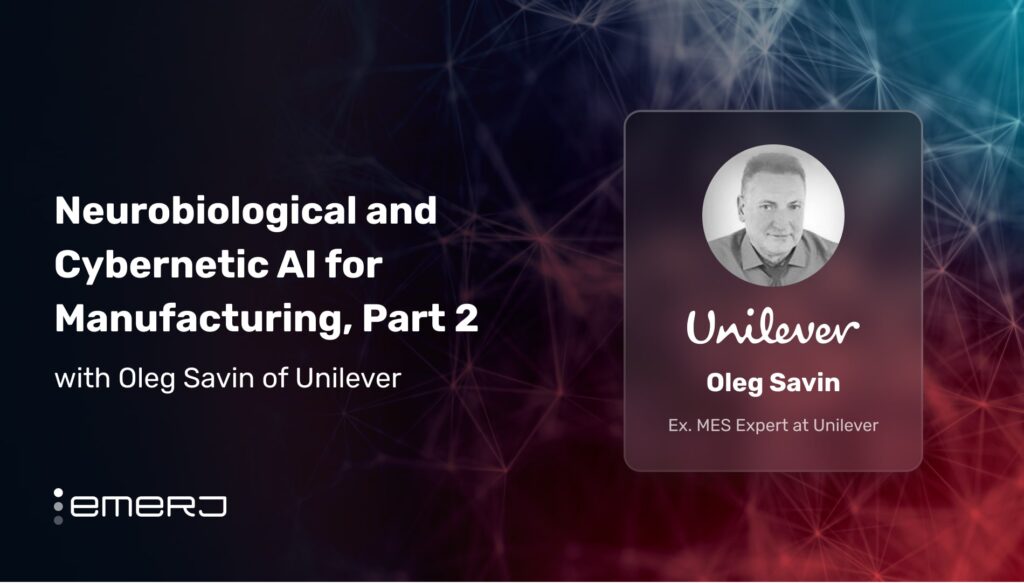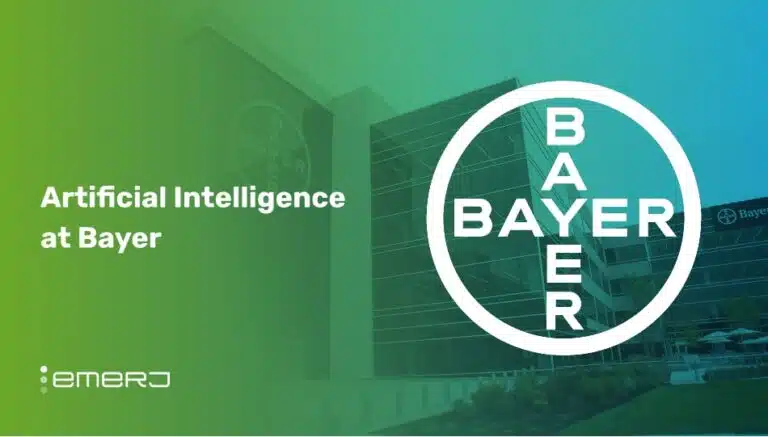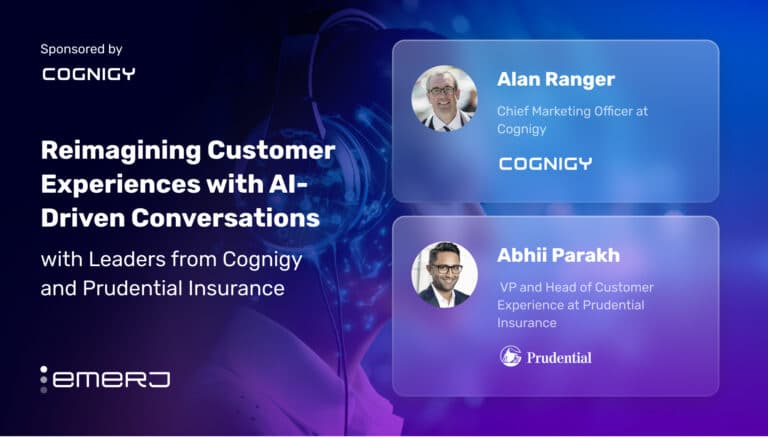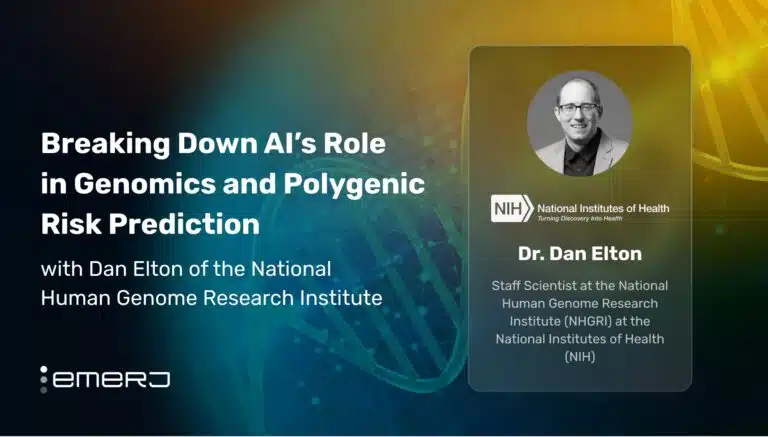In our current technology-driven era, data is considered extremely valuable. Yet, data often goes unused or underutilized. The reasons vary, but it’s certainly not a newly surfaced problem. An article initially published by Harvard Business Review highlights that organizations struggle with managing and analyzing existing data.
This problem is more pronounced in manufacturing, where unused data can have a greater financial impact. According to an article by the World Economic Forum, effective data use in manufacturing helps to make businesses more sustainable and profitable.
Emerj Senior Editor Matthew DeMello sat down with MES Expert Oleg Savin from Unilever on the ‘AI in Business’ podcast to continue their conversation about the challenges and potential of AI in manufacturing. In particular, Savin expanded on the problem of unused data in manufacturing spaces.
The following article will focus on two key takeaways from the second half of their conversation:
- Understanding hurdles to AI adoption in manufacturing: Using structured ontologies to improve decision-making by effectively using a greater percentage of collected data.
- Improving AI-driven manufacturing by aligning theory and practice: Leveraging a solid theoretical foundation that includes merging informational and operational technologies to implement AI initiatives effectively.
Guest: Oleg Savin, Former MES Expert, Unilever
Expertise: Engineering, Manufacturing, Data Science
Brief Recognition: Oleg Savin spent over a decade at Unilever, providing engineering expertise and leading advanced technology adoptions across several divisions of business. Before his retirement in 2024, Oleg offered his thoughts on the distinctions between Neurobiological and Cybernetic AI for engineering conferences across the world.
Understanding Hurdles to AI Adoption in Manufacturing
Savin explains where data is undervalued in the manufacturing space. He mentions that manufacturing systems actually collect petabytes of data, but only a small fraction of that data, often not exceeding 8-10%, is used to derive knowledge or support decision-making.
The challenge centers around being able to filter meaningful data from massive datasets that are likely unstructured as well. According to Savin, the future of AI is centered on systems that use ontologies, or structured models of knowledge, to extract relevant information, recognize patterns, and support decisions. Savin offers, “According to the ontological model, it will extract needed data and produce the patterns needed for making decisions.”
Savin suggests businesses need to treat data as a key business resource. While there’s a need for intelligent systems to extract relevant data based on contextual understanding, hurdles exist to achieving that. Savin identifies two main challenges that prevent the adoption of AI in manufacturing:
- Misunderstanding AI:
It’s all too common to equate neural networks to AI, but neural networks are just one component. - Lack of platforms:
Unified frameworks to design and implement intelligent systems directly are still in the research and development phase. Without the needed tools, widespread adoption is limited. Manufacturing personnel, from engineers and managers to those on the shop floor, benefit greatly from platforms that can automate many stages of development.
These frameworks can automate a business or manufacturing function, such as formulating requirements, analyzing a domain, formulating requirements and describing those requirements, and then programming, installing, and implementing them.
When asked how business leaders can better understand and work with these technologies, Savin identified and emphasized four key domains with which leaders need to be familiar. These include:
- Philosophy: Encompasses phenomenology, epistemology, and logic.
- Linguistics: Includes semantics
- Cognitive Science: Describes how AI should acquire knowledge
- Mathematics: Serves as the language of description and includes systems theory, cybernetics, and fractal models
He touches upon how the fractal cognitive computational model of consciousness integrates the above-mentioned domains, which artificial intelligence should aim to mimic. Essentially, the model is fractal because it reflects patterns of organization seen in biological consciousness.
Savin offers guidance When asked what questions a manufacturing executive heading an early-stage AI initiative should be asking. Those questions include:
- What are the core indicators (or approximately 5-7 key metrics) that define success or stability in existing processes?
- Can the AI system prove its ability to maintain stability and predict deviations?
- Are the system’s decisions explainable and grounded in defined metrics?
- Can the system adapt using ontologies rather than just retraining on new data?
Savin goes on to identify the three major dimensions of integrated indicators that comprise the fractal approach. These include:
- Time
- Value
- Efficiency
Improving AI-Driven Manufacturing by Aligning Theory and Practice
AI applications in manufacturing operations are beneficial for predictive maintenance, quality assurance, and process optimization. While some challenges are unavoidable when implementing AI, such as the cost of labeling large data sets, there is also a deeper foundational issue, one which Savin addresses.
Savin succinctly explains the importance of aligning practice with theory, “There is no practice without good theory.” He emphasizes the need for a solid theoretical foundation and explains four resulting benefits:
- Shift away from IT capabilities: The workforce’s motivation from management to line personnel will become a critical focus. According to Savin, motivation should develop and stimulate creativity.
- Convergence of informational technologies (IT) and operational technologies (OT): Current IT design practices have shortcomings when trying to model or configure systems across different environments, such as in production or in the cloud. The convergence of IT and OT makes operations cheaper, more efficient, and more convenient.
- Business management through autonomous smart modules: Smart operating systems will enable self-organization and self-management and support end-to-end value-creation processes, allowing businesses to turn data into valuable resources.
- Achieving the required level of process stability for human time horizons: Traditional functionality like accounting, control, and management may become redundant.



















